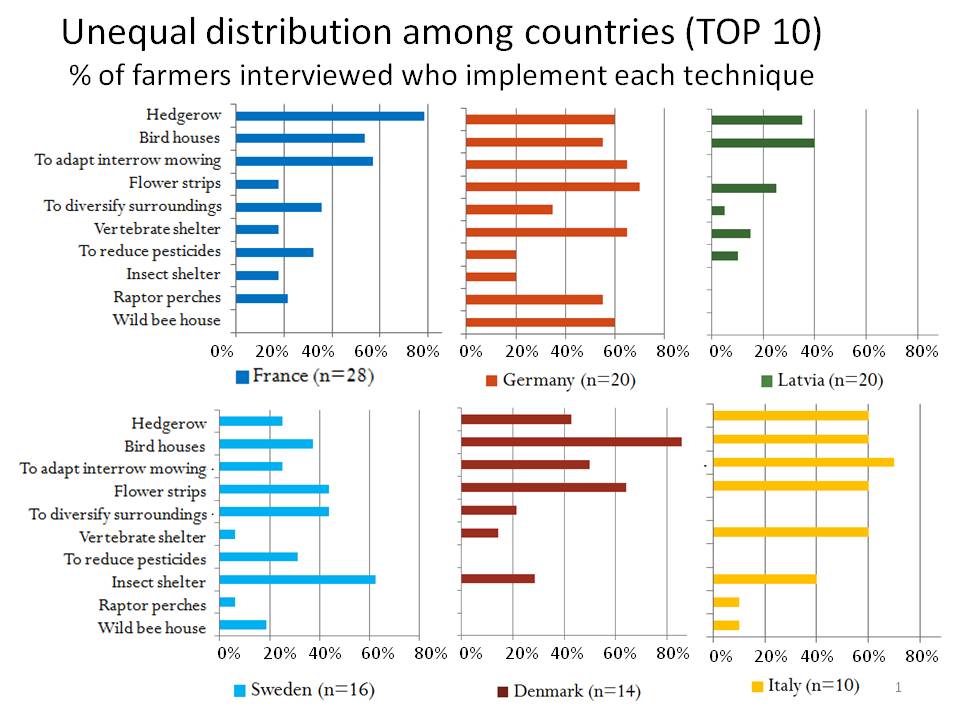Functional Agrobiodiversity (FAB) in practice
Fruit growers are aware of the importance of Functional Agrobiodiversity (FAB) in their orchards. Many of them are convinced that active management of FAB can help to support pest control, to enhance pollination and to improve soil fertility. Some have met hurdles in implementing particular methods and techniques or did not experience any effect of their efforts. Nonetheless, most practitioners are eager to develop and implement feasible and sometimes really innovative FAB-techniques. Due to their activities European fruit growers build up an increasing tool-box on how to foster FAB on-farm.
In a first approach, the EcoOrchard team tried to explore the existing practical knowledge on FAB-techniques tested in the orchard environment. A survey has been performed in nine Eurpean countries with the aim to describe farmers' expectations and management practices towards FAB and identify innovative FAB-techniques that are both efficient and easy-to-implement for wider dissemination. In the interviews, more than 30 different FAB-techniques were mentioned by the practitioners. They could be assigned to three main categories:
- dynamic agricultural practices adaptable from a season to another (e.g.: to adapt interrow mowing)
- long-term ecological infrastructures (e.g. hedgerows)
- system redesign requiring strong interactions with the production system (e.g.: crop diversification)
We noticed some variation in the implementation of the most common FAB-techniques among the countries. Nevertheless, some of the FAB-techniques which are multifunctional (e.g. hedgerows) or easy to implement (e.g. bird houses, adaptation of interrow mowing) are obviously well-known in the European grower community. The results of the survey were presented and discussed during a workshop with participants of 17th Ecofruit conference at Stuttgart-Hohenheim in February 2016.
|  |
| Implementation of FAB-techniques in several European countries. Please click to enlarge. |

